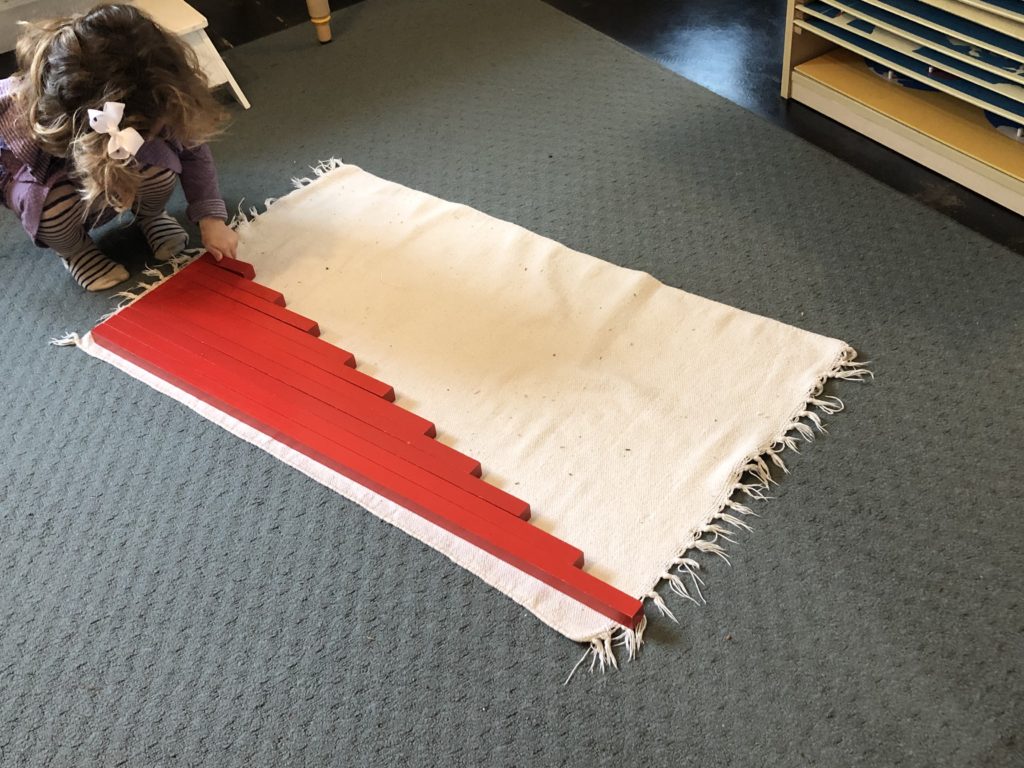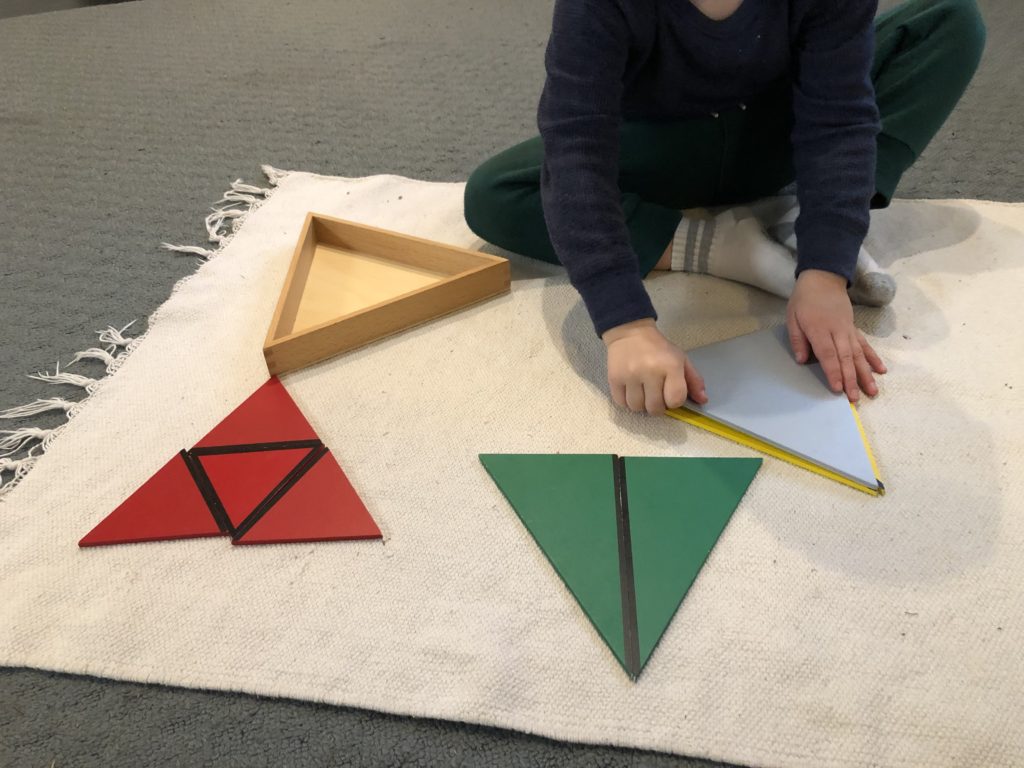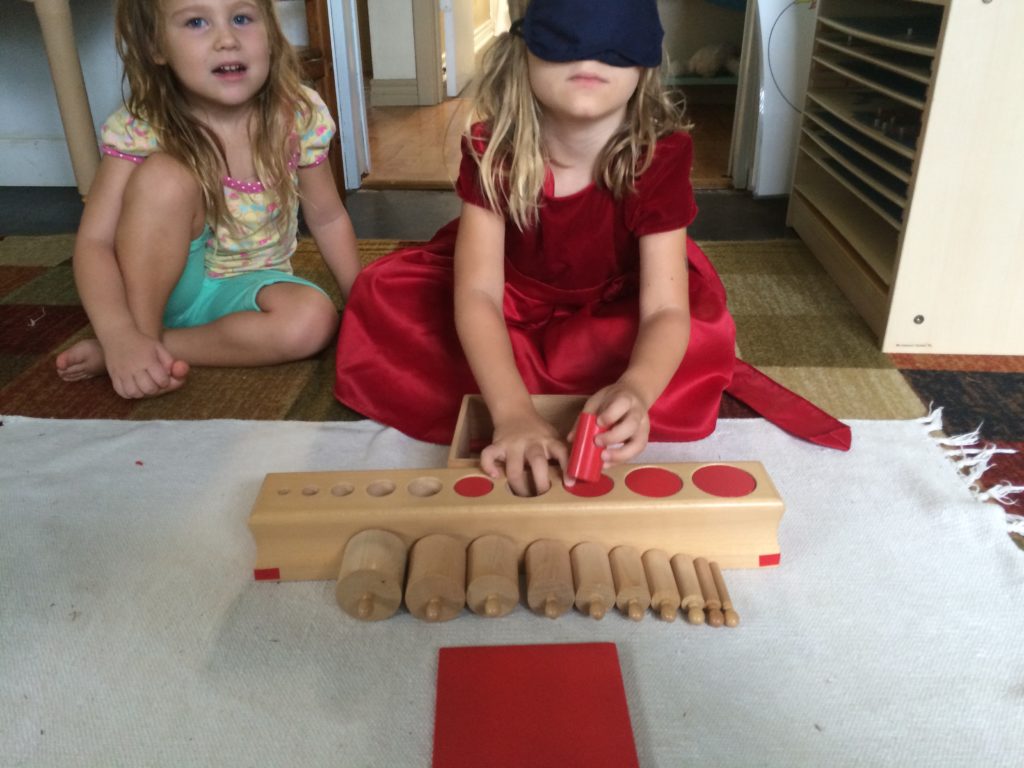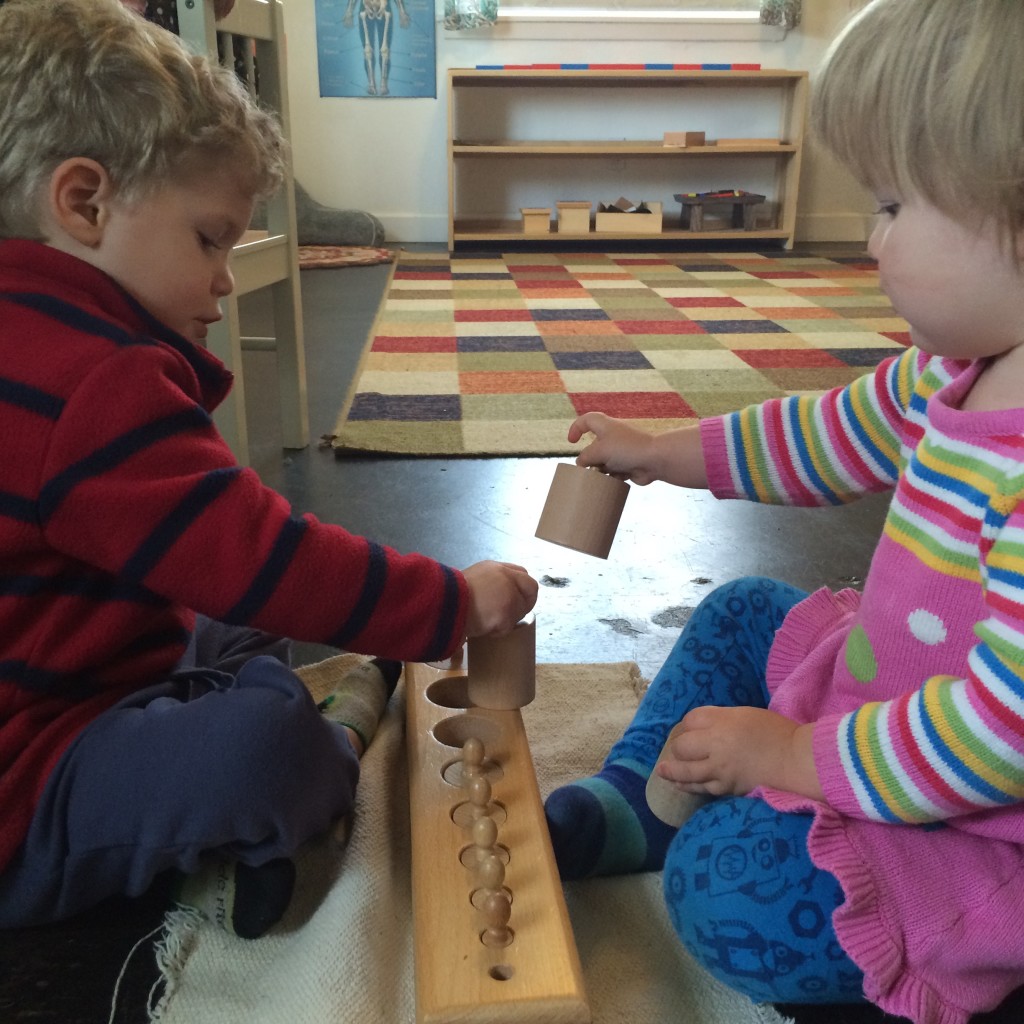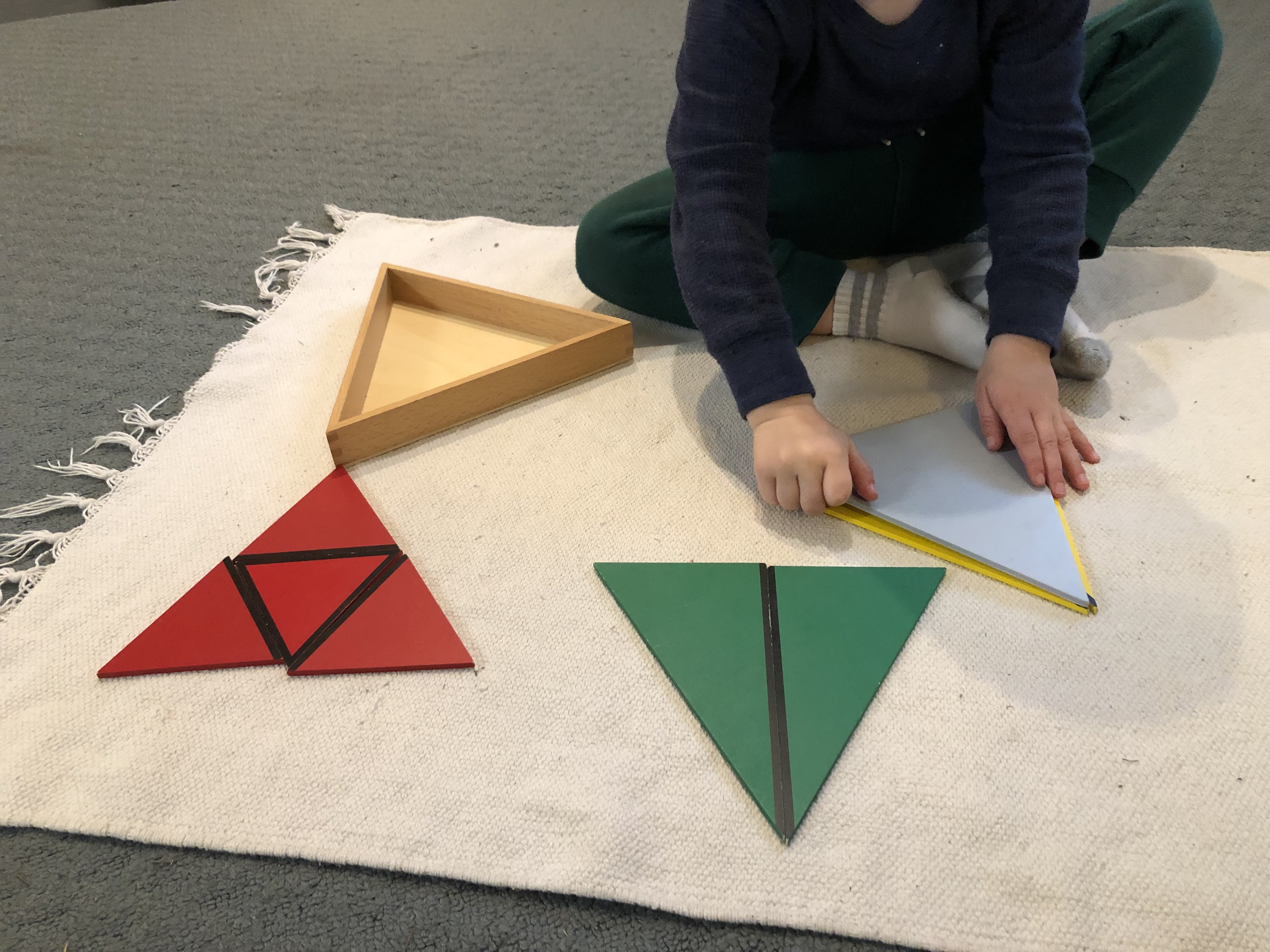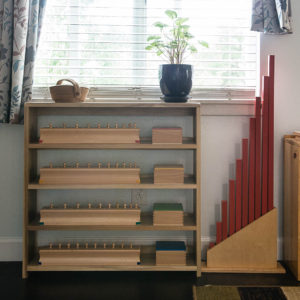If you’ve ever seen a two-year-old work her way around a room and pick up nearly every item within reach, then you know the appeal that simple objects have to a young child. Everyday items can be so attractive for the child to look at, to pick up and carry around.
Over a century ago, Maria Montessori observed that children happily manipulate such objects, learning from them. That is, learning through their senses. “The hands,” declared Dr Montessori, “are the instruments of intelligence.” Over time she developed the Sensorial materials, which exist in today’s classrooms much as they did in Montessori’s own schools.
Sensorial activities help children develop by encouraging their brain to differentiate between similar objects. Such visual discrimination—think of it as attention to detail—will soon help children when they begin writing and reading (visualize the difference between “r”, “n” and “h”). Working with patterns develops the neural pathways to facilitate understanding quantities and other math processes.
The Sensorial section of our classroom includes many of the materials that Montessori is best known for: the pink tower, the brown stairs, the knobbed and knobless cylinders and the varieties of insets. Maria Montessori herself designed most of these works, based on her own experiences of how young children learn.
